Huangshan Tourism Overview Huangshan, located in Anhui Province, China, is a UNESCO World Natural and Cultural Heritage site. It is renowned for its "Five Wonders": peculiar pines, bizarre rocks, the sea of clouds, hot springs, and winter snow, earning it the title of "the most fantastic mountain under heaven." The Huangshan Scenic Area is divided into several zones, including Hot Springs, Yuping, Beihai, Songgu, Yungu, Baiyun, and the Xihai Grand Canyon.
Geomorphological Features of Huangshan
Huangshan encompasses 800 million years of geological history, integrating peak forest landforms and glacial relics, along with typical geological landscapes such as granite formations, granite caves, springs, pools, streams, and waterfalls. The front mountain has sparse rock joints and is mostly spheroidally weathered, making the mountain's body thick and majestic. The back mountain has dense rock joints and is mostly columnar weathered, making the mountain body steep, forming the characteristic "majestic front mountain and beautiful back mountain" landform. Huangshan's peak forest structure was formed through mountain-building movements, crustal uplift, and glacial and natural weathering processes. The mountain is mainly composed of Yanshanian granite, with well-developed vertical joints, intense erosion and cutting, intersecting fractures and fissures, and long-term water erosion, forming granite caves and channels.
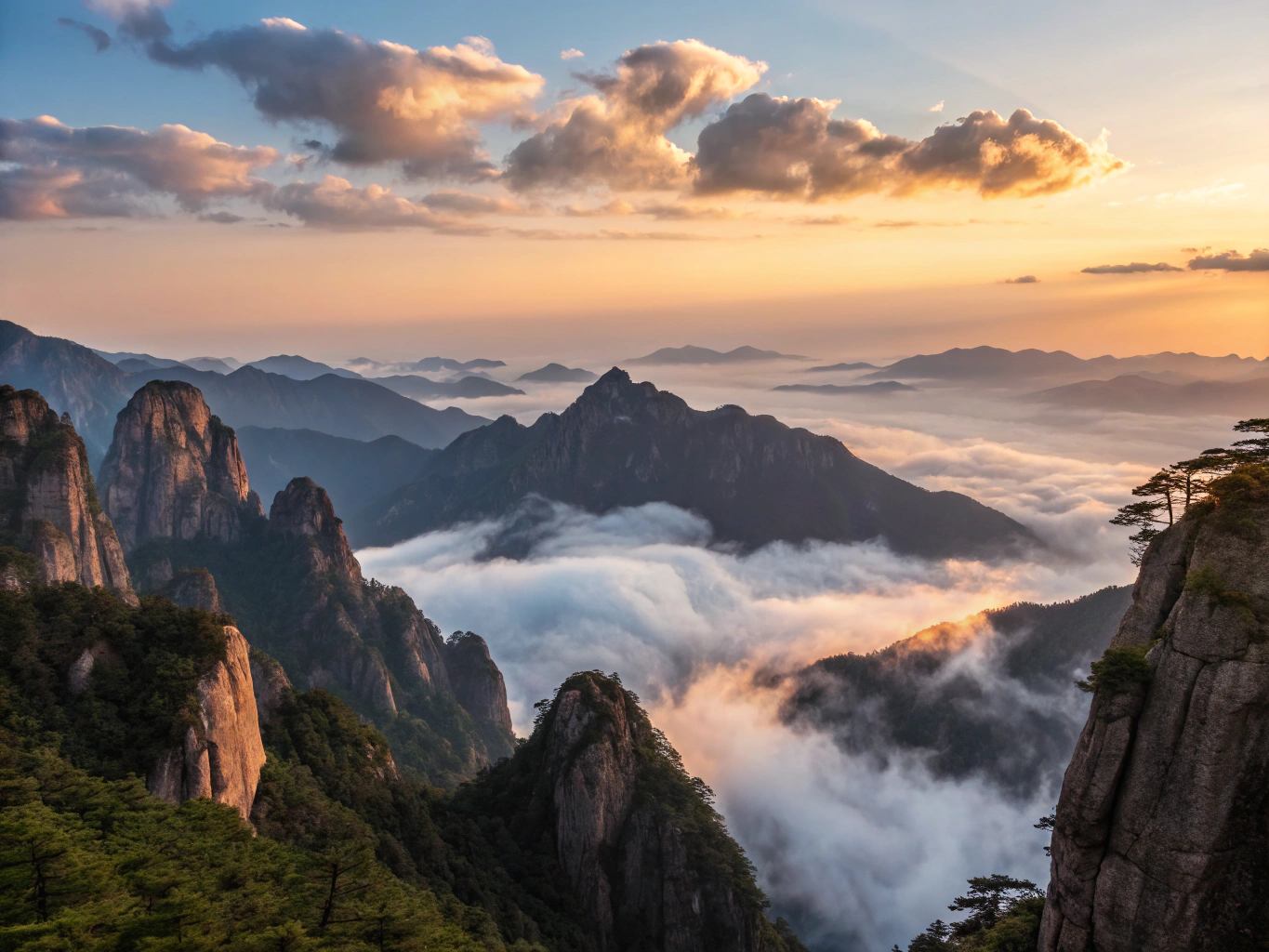
Huangshan's ecosystem is stable and balanced, with complete and vertically distributed plant communities, known as the "Botanical Treasury of East China" and a "Natural Botanical Garden." The forest coverage rate is 98.29%, vegetation coverage is 93.6%, and the greening rate is 98.53%. It preserves one alpine marsh and one alpine meadow, with 1,805 species of higher plants from 222 families and 827 genera, including rare plants like Huangshan pine, Huangshan azalea, Tianmu flower, magnolia, yew, and southern hemlock. There are 28 plant species first discovered in Huangshan or named after it. There are 37 nationally protected plant species, including one first-class protected species, the dawn redwood, four second-class protected species including the ginkgo, and eight third-class protected species. There are 10 genera of endangered species, six of which are endemic to China. Huangshan is rich in cultural relics, such as ancient paths, couplets, bridges, pavilions, temples, and towers, with over 300 existing cliff inscriptions, nurturing the "Huangshan School" of Chinese landscape painting.

Legends of Huangshan
Huangshan, known in ancient times as "Tianzi Du," was considered the residence of the heavenly emperor and immortals due to its majestic and mysterious nature. During the Qin Dynasty, it was also called "Yi Mountain" because of its dark rocks. It is said that the Yellow Emperor refined elixirs here, giving the mountain its name. The Yellow Emperor, also known as Xuanyuan, was the leader of a tribal alliance. To achieve immortality and do good for the people, he sent Fuqiu Gong to find a place to refine elixirs. After three years, Fuqiu Gong returned and told the Yellow Emperor, "There is a group of high mountains in the south of the Yangtze River, called Yi Mountain because of its many dark rocks, suitable for refining elixirs."
The Yellow Emperor led Fuqiu Gong, Rongchengzi, and some servants to Yi Mountain, built stone houses, and set up a furnace to refine elixirs. They collected the necessary herbs and dug a well to access the sweet mountain spring, then began refining elixirs. After three years, the prepared firewood was almost exhausted, and the elixir was not yet complete. The Yellow Emperor put one of his legs into the furnace as fuel, finally completing the elixir. The three of them consumed the elixir and became immortals. Because Yi Mountain was where the Yellow Emperor refined elixirs, it was named "Huangshan." Among the seventy-two peaks of Huangshan, there are Xuanyuan Peak, Fuqiu Peak, and Rongcheng Peak, named after the three immortals. In Peach Blossom Creek, there are still the elixir wells and mortar they used.
Famous Tea of Huangshan
Huangshan is one of China's famous tea-producing regions, and its renowned tea, Huangshan Maofeng, is famous worldwide. This tea is favored by tea enthusiasts for its unique flavor and high quality. Huangshan Maofeng is best brewed in a transparent glass cup to appreciate the beautiful unfolding of the tea leaves in the water. When brewing, it is advisable to use water at around 80°C to maintain the optimal aroma and taste of the tea. After each brew, the tea soup is clear and bright, with a lingering sweetness that leaves a lasting impression.
Huangshan Maofeng, with its unique flavor and long history, is a treasure among green teas and is part of Chinese tea culture, worthy of tasting and collecting. If you are interested in Chinese tea culture, you can visit our official website, where tea seasonings are currently on hot sale!
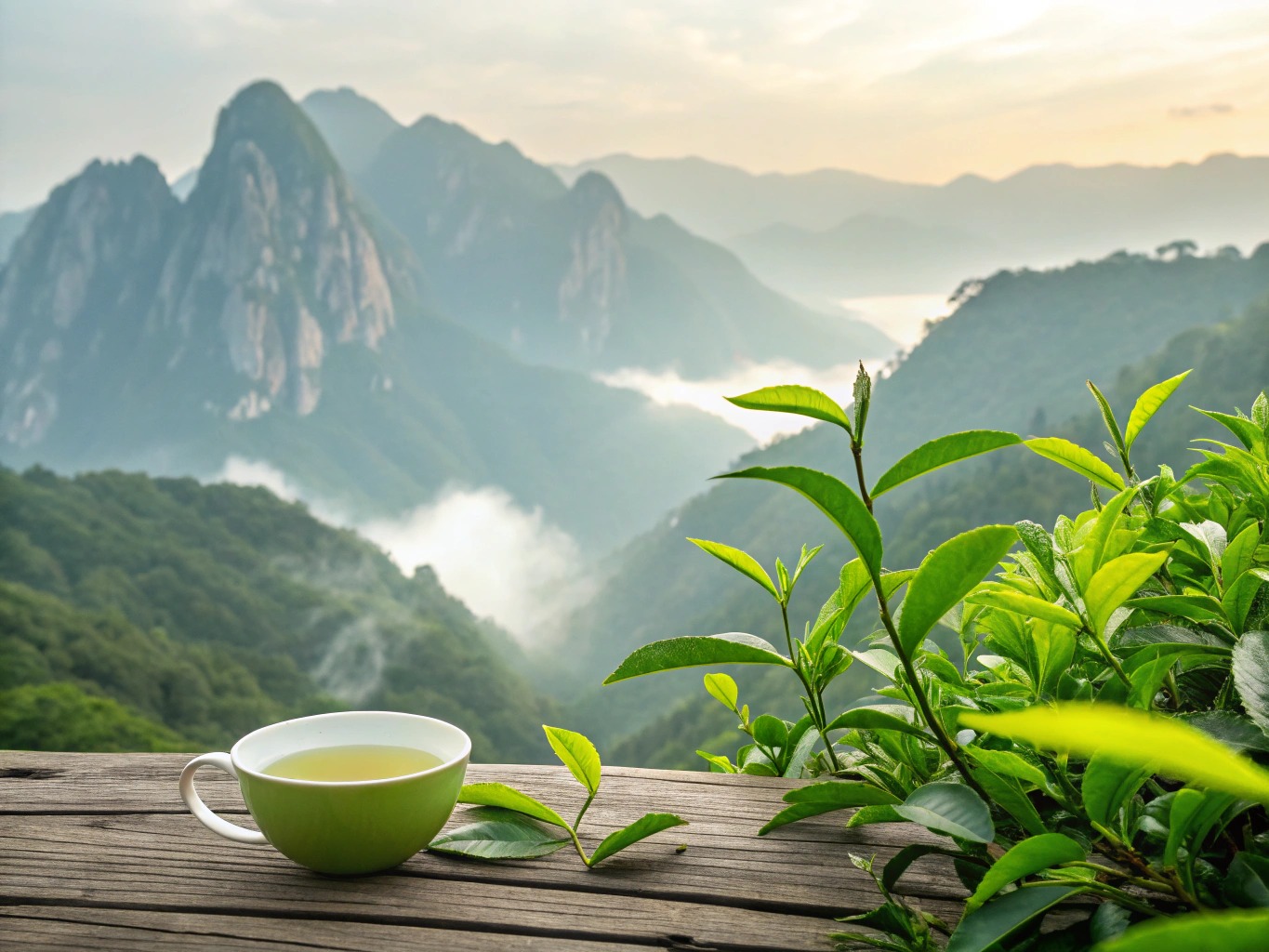
The unique landscape of Huangshan
Huangshan has five wonders and three waterfalls. The five wonders refer to the five unique landscapes of Huangshan in Anhui Province, China: peculiar pines, bizarre rocks, the sea of clouds, hot springs, and winter snow. The three famous waterfalls of Huangshan are "Renzi Waterfall," "Baizhang Spring," and "Jiulong Waterfall." Huangshan Hot Springs, historically known as "Lingquan," "Tangquan," and "Zhushui Spring," gushes from beneath Ziyun Peak, facing Peach Blossom Peak across the stream. Legend has it that the Yellow Emperor bathed in Huangshan Hot Springs for forty-nine days before ascending to immortality. Tang Dynasty poet Jia Dao once expressed his admiration with the words, "The wise man has gone far, this water is truly my teacher." Huangshan Hot Springs originate from an altitude of 850 meters beneath Ziyun Peak, facing Peach Blossom Peak across the stream. It is the first stop when entering Huangshan through the main gate. The hot springs have a daily flow of about 400 tons, flowing year-round, with a constant temperature of around 42°C, classified as alpine hot springs.
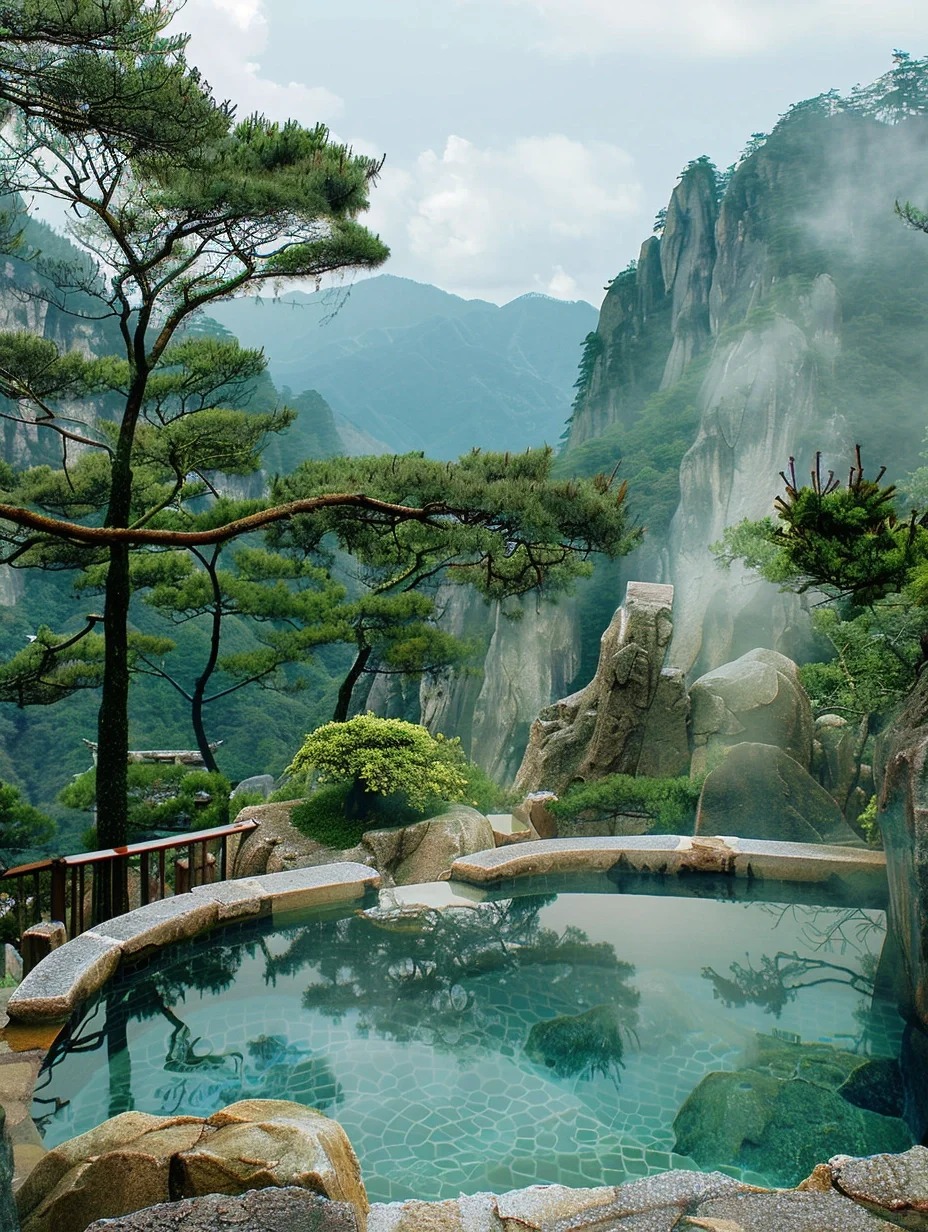
Main Attractions and Routes
Yuping Tower Yuping Tower is an important attraction in Huangshan, where visitors usually start their ascent. Here, you can see the famous Guest-Greeting Pine, one of Huangshan's iconic landscapes.
Tiandu Peak Tiandu Peak is one of the highest peaks in Huangshan, with a challenging climb, but it offers a panoramic view of the magnificent Huangshan scenery. Visitors typically start from Yuping Tower, pass Tiandu Peak, and reach Bright Summit.
Bright Summit Bright Summit is the second-highest peak in Huangshan and one of the best places to watch the sunrise and sea of clouds. Visitors can continue from here to the Beihai Scenic Area.
Xihai Grand Canyon Xihai Grand Canyon attracts many visitors with its rugged terrain and magnificent natural scenery. The tour route here is relatively complex, so it is recommended to plan your itinerary in advance.
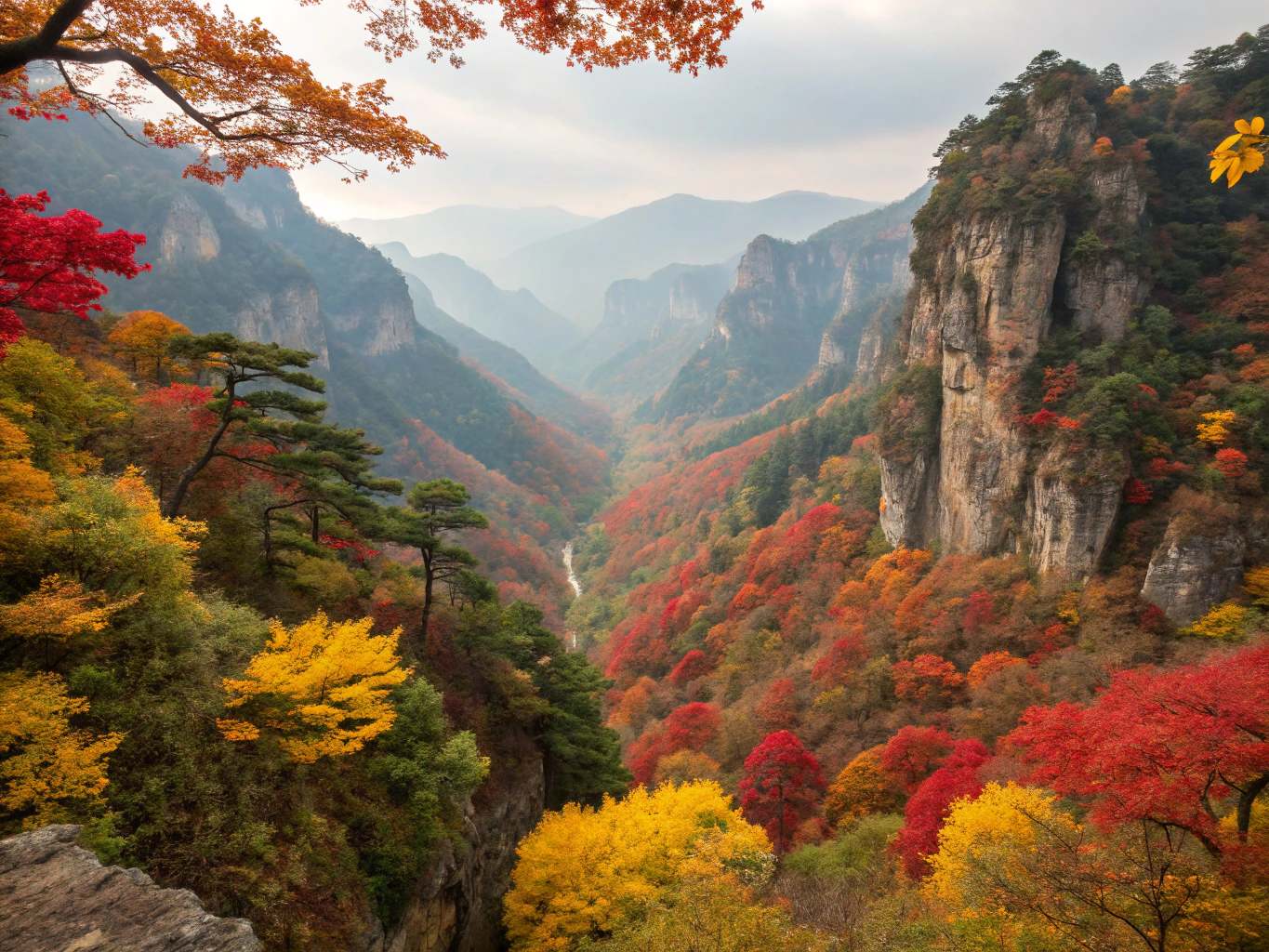
Detailed Introduction to Huangshan Attractions
Huangshan Scenic Overview Yungu Scenic Area Yungu Scenic Area is famous for its spectacular sea of clouds and peculiar pines, making it an excellent place to watch the sunrise over Huangshan. The sea of clouds here is often referred to as the "East Sea," one of Huangshan's five major seas of clouds. Visitors can easily reach this area via the Yungu Cable Car to enjoy the magnificent natural scenery.
Yuping Scenic Area
Yuping Scenic Area is the central scenic area of Huangshan, centered around Yuping Tower, with Lotus Peak and Tiandu Peak as its main features. The famous Guest-Greeting Pine is located to the left of Yuping Tower, one of Huangshan's iconic landscapes. The scenery here concentrates on Huangshan's peculiar pines, bizarre rocks, and ancient cliff carvings, making it a must-visit for tourists.
Beihai Scenic Area
Beihai Scenic Area is located in the central part of Huangshan, the heart of the Huangshan Scenic Area. It features peaks, rocks, valleys, terraces, pines, and clouds, creating a natural masterpiece of grandeur, wonder, fantasy, and danger. The natural layout and color changes of the Beihai Scenic Area form a series of magnificent, strange, and fantastic natural paintings, making it the scenic window of Huangshan.
Tianhai Scenic Area
Tianhai Scenic Area is a high mountain area in Huangshan, located near Bright Summit. It is one of the best places to watch the sea of clouds in Huangshan, especially during sunrise and sunset, when the sea of clouds and peaks create a stunning landscape.
Songgu Scenic Area
Songgu Scenic Area is known for its dense pine forests and tranquil valleys, making it a paradise for hikers. The natural environment here is well-preserved, allowing visitors to enjoy the serene beauty of nature.
The Literary History of Huangshan
"After seeing the Five Sacred Mountains, no other mountains are worth seeing; after seeing Huangshan, the Five Sacred Mountains are not worth seeing." Huangshan is renowned both domestically and internationally for its "Five Wonders" and the vast Huizhou culture, earning it the title of "the most fantastic mountain under heaven." The peculiar scenery of Huangshan represents the beauty of the Jianghuai mountains and rivers, and the Guest-Greeting Pine of Huangshan symbolizes the warm hospitality of the people of Anhui, embodying the Eastern etiquette culture of embracing the world.
Huangshan is not only a beautiful natural mountain but also a rich artistic treasure trove. Since ancient times, people have visited, built, and praised Huangshan, leaving behind a rich cultural heritage, summarized as the "Five Victories": relics, calligraphy and painting, literature, legends, and celebrities. Huangshan currently has over 100 ancient buildings, including towers, pavilions, and bridges, mostly in the Huizhou style, with upturned eaves and simple elegance.
Tingtao Residence, located in front of Renzi Waterfall and above Ziyun Rock, was once the place of confinement for General Zhang Xueliang. Huangshan has nearly 300 existing cliff inscriptions from various dynasties, encompassing seal script, clerical script, regular script, and cursive script, with representatives from the Yan, Liu, Ou, and Zhao schools. Literati and scholars from various dynasties left behind numerous literary works while admiring the scenery, with over 20,000 pieces (poems) passed down.
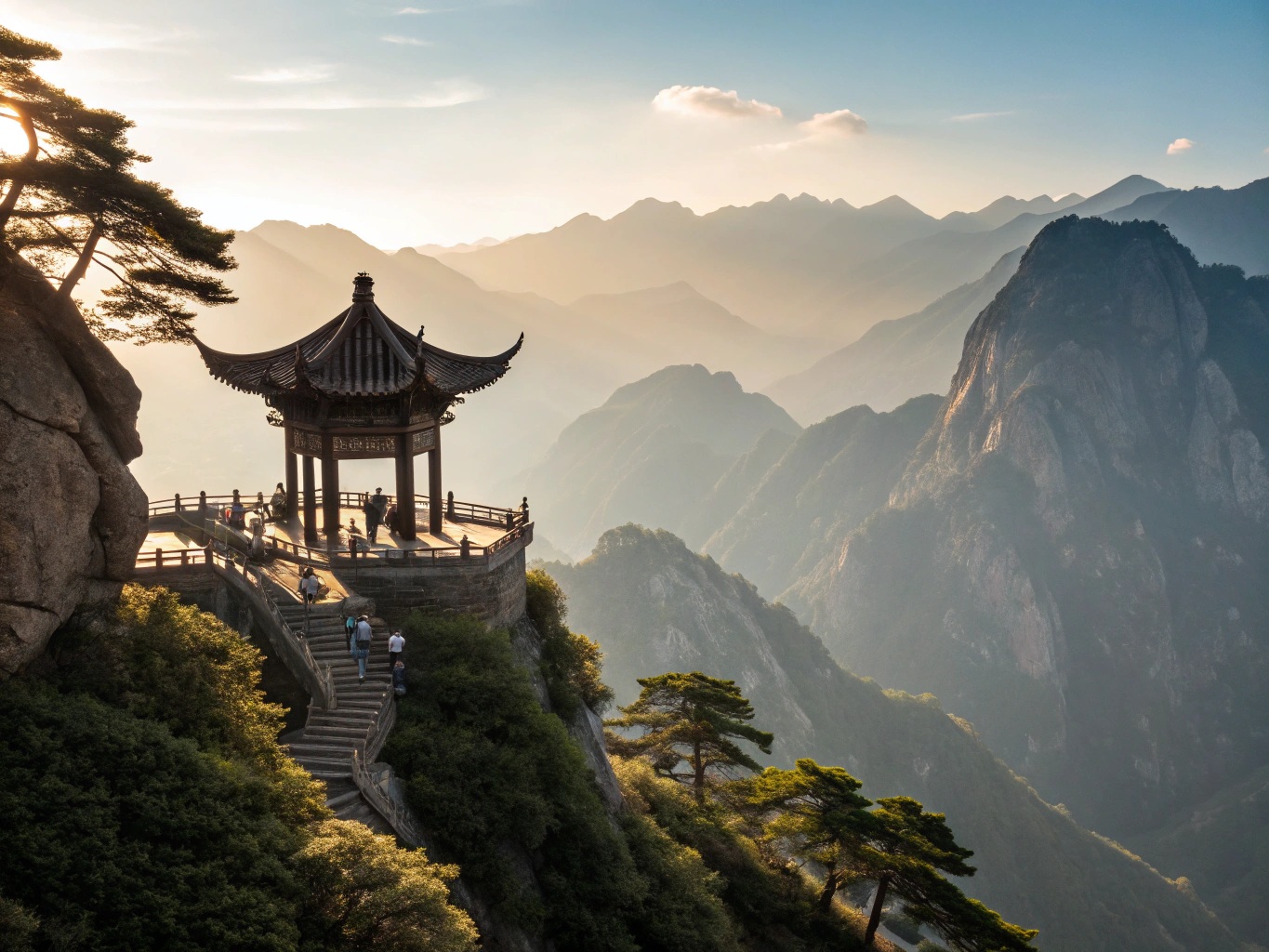
Tang Dynasty poet Li Bai left the verses "Huangshan four thousand ren, thirty-two lotus peaks. Red cliffs flank stone pillars, lotus blooms of gold" during his visit to Huangshan. Huangshan nurtured the "Huangshan School" of painting, establishing a landscape painting school with Huangshan as its main subject, standing out in the Chinese art scene with far-reaching influence.
Other Famous Attractions Flying Stone
This is a giant rock about 10 meters high, seemingly dropped from the sky, resting steadily on the mountaintop, one of the outstanding bizarre rocks of Huangshan. Dream Pen Grows Flowers: Located in the Beihai Scenic Area, it is a giant rock resembling the tip of a writing brush, with a pine tree growing on top, carrying profound meaning.
In conclusion, Huangshan, with its unparalleled natural scenery and profound cultural heritage, has become a tourist destination in China and the world. Here, visitors can not only experience the wonders of nature but also immerse themselves in rich cultural connotations. Whether hiking or meditating, Huangshan offers a spiritual cleansing and awe-inspiring experience.
